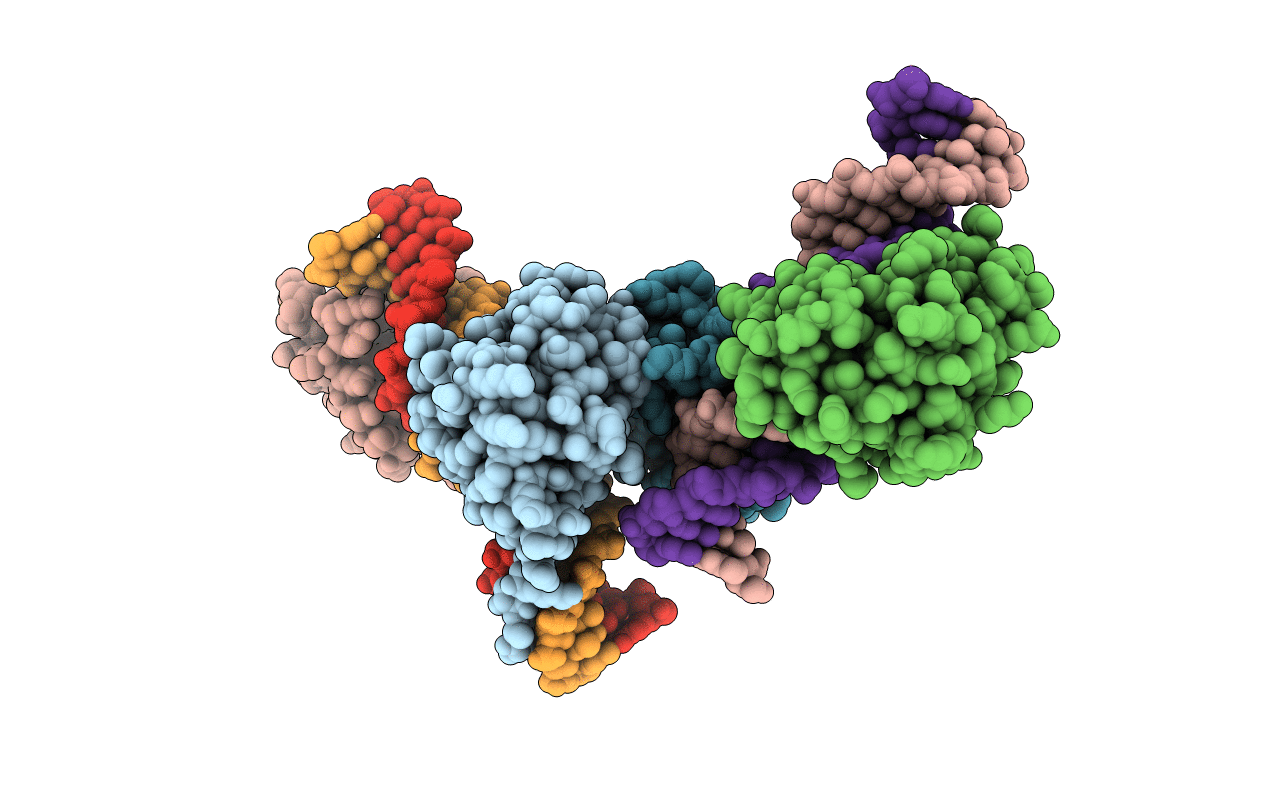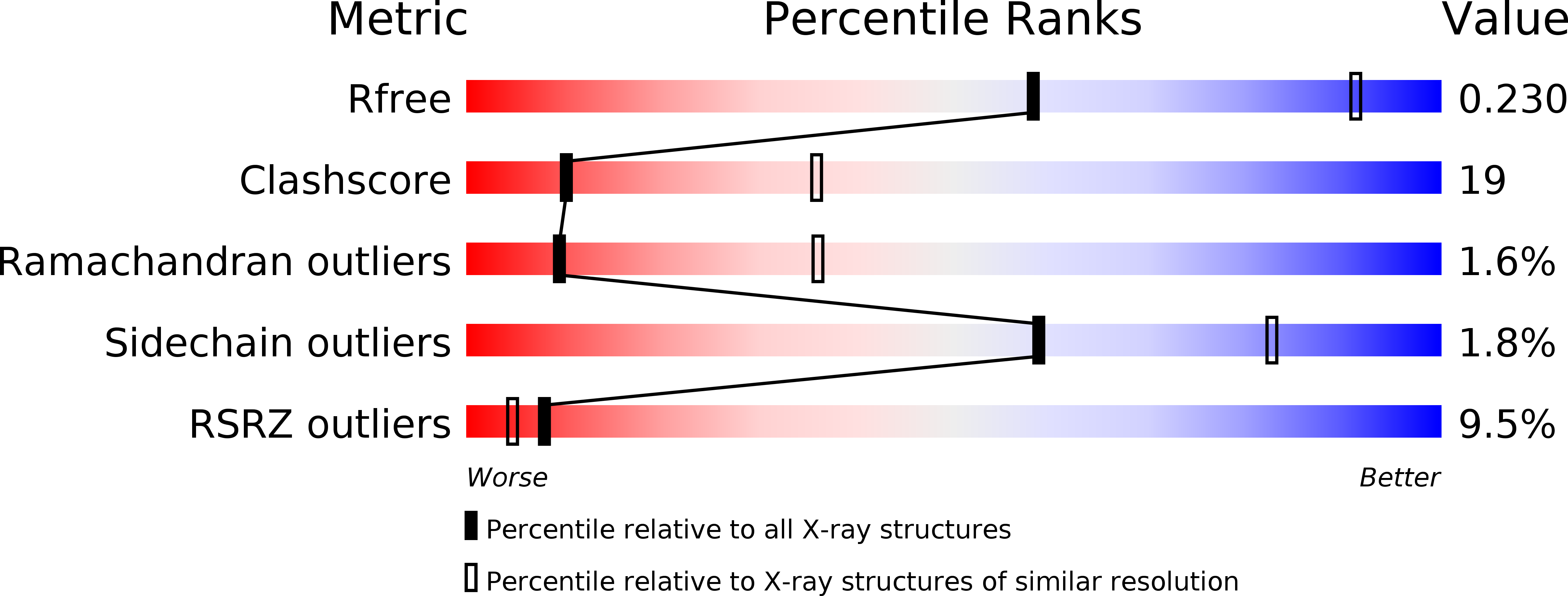
Deposition Date
2016-04-27
Release Date
2017-05-03
Last Version Date
2023-09-27
Entry Detail
PDB ID:
5JLT
Keywords:
Title:
The crystal structure of the bacteriophage T4 MotA C-terminal domain in complex with dsDNA reveals a novel protein-DNA recognition motif
Biological Source:
Source Organism:
Enterobacteria phage T4 (Taxon ID: 10665)
synthetic construct (Taxon ID: 32630)
synthetic construct (Taxon ID: 32630)
Host Organism:
Method Details:
Experimental Method:
Resolution:
2.96 Å
R-Value Free:
0.24
R-Value Work:
0.21
R-Value Observed:
0.22
Space Group:
P 61


